Dark Knots and Yellow Spots: Sub-Saharan Africa and Energy Access


· 11 min read
The very first time I saw something resembling the picture above, I was in my home, crouched upon a sofa watching the iconic Ad Astra. Earth was rotating, and just as the eager rays of the sun hit the planet, I caught the glistening night bathing our continents, and with it, clusters of yellow spots. That picture hardly held any significance to me at the time. If only I had more clarity.
Still on the picture, let’s take a hypothetical view of an alien spacecraft hovering over the planet at night. They happen upon that view of the earth (I know, the earth isn’t flat and trust me, I am not a flat-earther), and, my guess is, upon seeing our planet they’d battle three headscratchers:
Interesting questions.
The clusters of yellow spots represent good old electricity, and these clusters tell a larger story: The story of energy.
8 billion people call Earth home. 8 billion people spread across seven continents, over 200 countries, birthed into diverse cultures, and existing within a set of unique environments and cultural experiences. Seeing as all 8 billion of us have a singular root from which we descend, one should expect that everyone would be intrinsically equal, not so? Unfortunately, that answer is painfully (and obviously) NO. However, the specific component of inequality that I want to highlight here isn’t one of race or gender or status or wealth. It is the very inequality upon which the curious questions asked by our hypothetical friends above rests.
The inequality of energy, or as I like to call it, the “energy yays” and the “energy nays”.
But our focus today will not be on the energy yays; the regions with the congregation of yellow spots. Our focus in this article will rest solely on the energy nays, particularly the region on our map that forms the basis of the third question above.

If you take nothing out of this article, at least look at the three images above and, for a brief moment, imagine life through the eyes of the five lives represented. Do feelings of discomfort clad your thoughts? Do you feel the smoky uneasiness that the Nigerian woman frying cassava does? Does it feel fair for a Ugandan child to be delivered and the first thing she sees is a paraffin lamp struggling to keep darkness at bay? Or consider the third child. Convincing himself that the books he reads, the education he struggles to partake in, would one day help him escape the darkness. If you struggle to relate to these pain points, to see the world in the uncomfortable reality that characterises human life in these few pictures, then, “yay” you are.
It is hard to imagine a growing economy or a healthy and productive household without thinking of energy access. But, of the over 1 billion people on earth that do not have access to electricity, 600 million+ of them live in Sub-Saharan Africa. This statistic, however, is not enough to have. For us to begin carving a path out of the abyss that is the paltry electrification rates of the continent, we need to first understand the energy landscape that over 1.2 billion Africans live in.
The objectives of energy access are enshrined in a placeholder called SDG7–one of the Sustainable Development Goals established by the United Nations General Assembly in 2015–as a component of its blueprint to make the world a more sustainable place for all people to live in by 2030. This goal calls for, “affordable, reliable, sustainable, and modern energy for all” (“all” here meaning every single human being on 2030 earth). This ambition was placed in 2015, and seeing as we have eight years to go to achieve this, the all important question is:
How are we doing?
Not very well, by many estimations. Yes, some progress was being made, but thanks to COVID, most developing nations in the world have had large fractions of their energy progress shattered, and the story is no different in Africa.
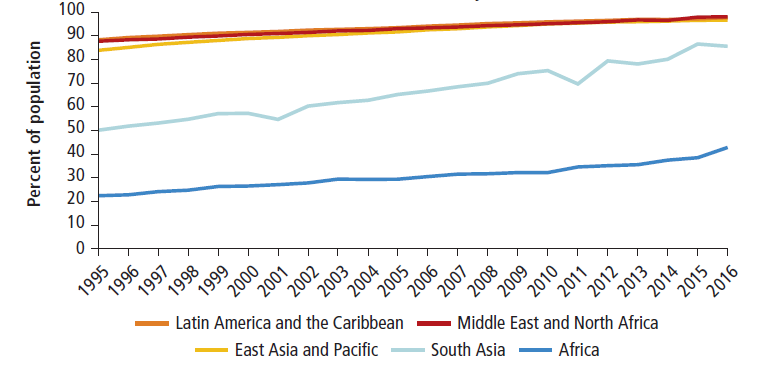
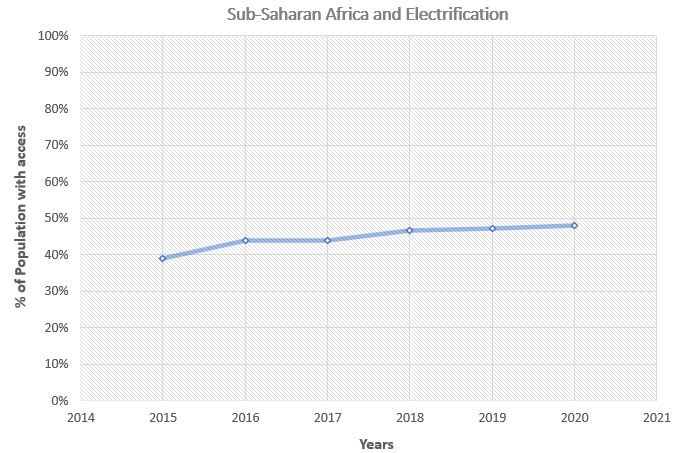
The simple line graph above gives a rough estimation of an electrification value that’s been echoed by most institutions and energy news reports on Africa’s electrification rates: only about 48% of Africa is currently electrified. However, this statistic begs a distinction: What part of Africa makes up the large portion of that 48%? Urban or Rural?
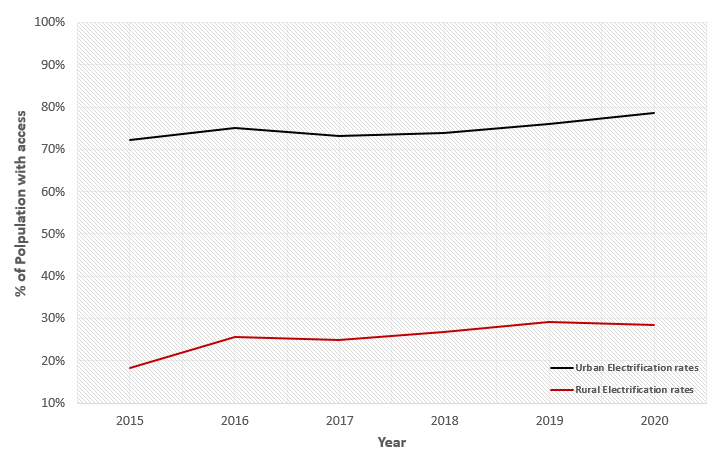
Rural communities are at the very lowest rung when it comes to energy access in sub-Saharan Africa, and this progressively increasing status of severe energy poverty can be partially attributed to HOW we have, over the years, defined energy access for developing and underdeveloped regions.
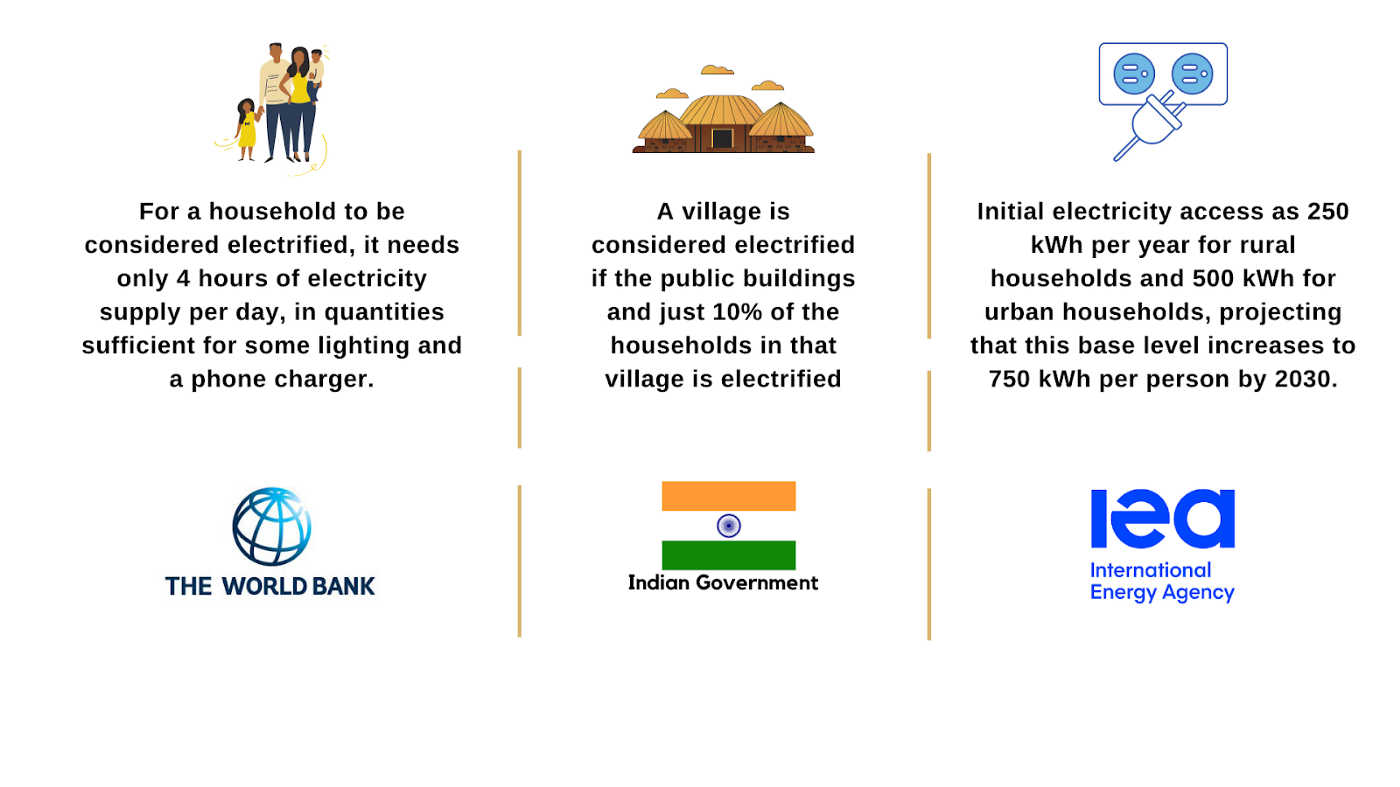
The above are only a few lenses through which energy access had been defined for as long as energy access could be defined. To give some context into the 250 kwh and 500 kwh benchmark definitions by the IEA, the average American uses 10,715 kwh per year. Your average fridge (if it runs all day, all year round), uses ~550 kwh.
Access to energy encompasses much more than the “being or not being connected” groups or definitions that cradle “powering light bulbs, enough power to run a fan, a torch, or some other electrical appliance.” These simplistic definitions betray the true value of having energy access and begs the question,
“Is energy being provided at the right quantity and quality [at a scale comparable to that of more developed communities] to advance not just everyday life, but power the critical productive use centres that trigger desired developmental outcomes?” (Whew! That was a mouthful, wasn’t it?)
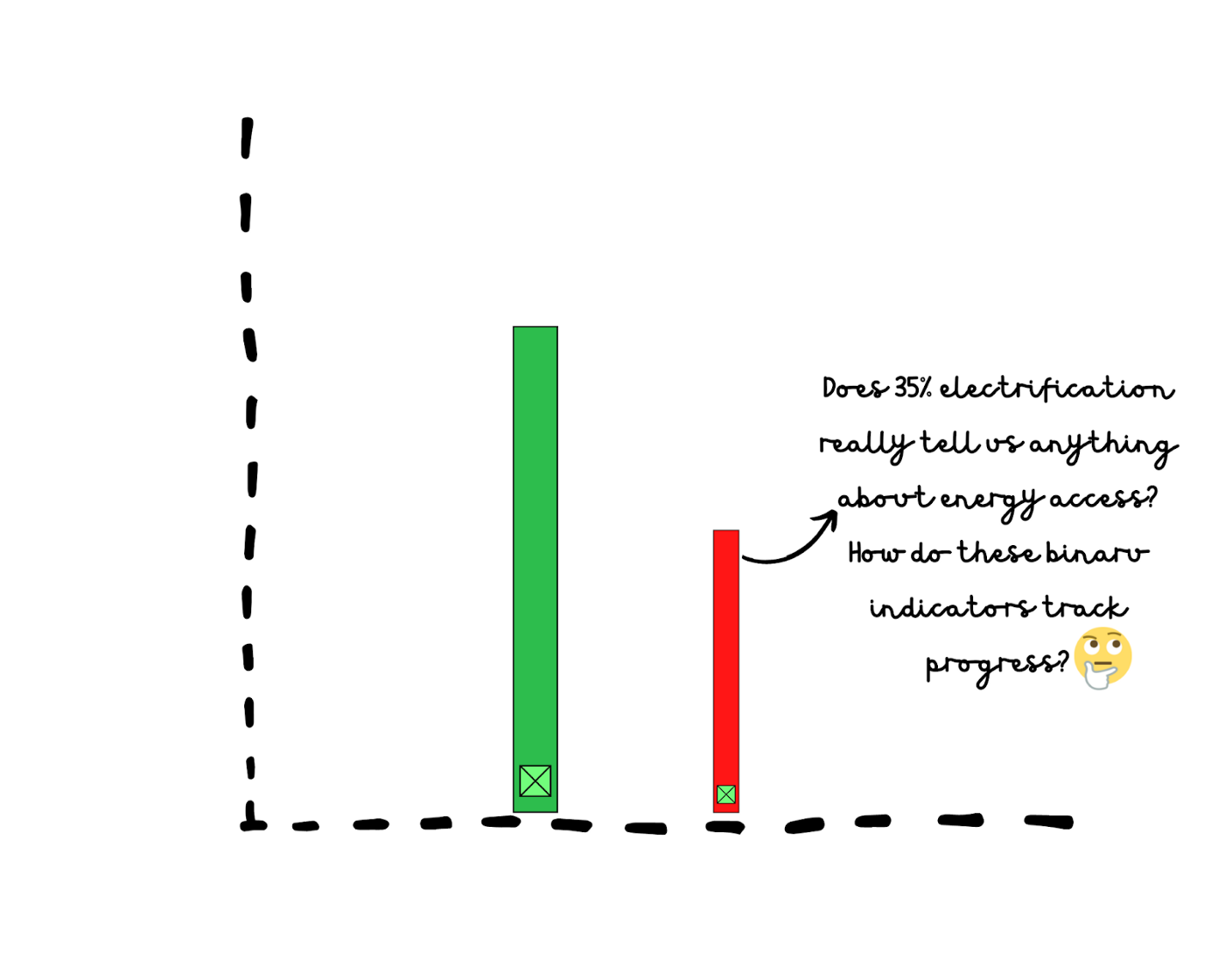
The limitations of the binary indicators used to define access are apparent. What EXACTLY does it mean for a community to be 35% electrified? What does that tell us about consumption and how that’s powering development? How are we measuring and tracking access to inform our progress and highlight the gaps that need to be closed?
One solution that exists to tackle these concerns is the Multi-Tier Framework (MTF).
Developed by SEforALL (An arm of The United Nations) in association with Energy Sector Management Assistance Program (ESMAP), the MTF classifies energy access into 6 tiers that show not only that a household or community receives energy, but also that the energy is of the right quality, reliable, affordable, predictable, safe and readily available for use.

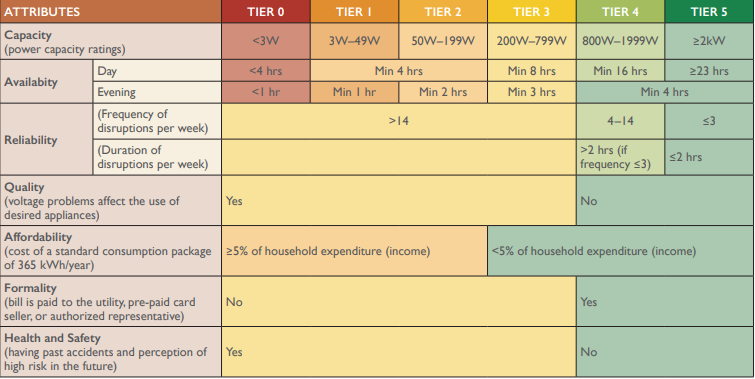
For example, let’s examine Family A residing in the agro-rich Dange-Shuni local government in Sokoto State, Nigeria. Assuming the local government authorities brought in a few solar power lamps (lasting for, say 10 hours a day) and small solar powered charging units for electrical appliances for Family A, the Nigerian government could whisper access. But, from the MTF, we see that the family could still fall into Tier 1-Tier 2, and that this level of electrification, although a good first step on the path to access, is still insufficient.
This is useful for governments and organisations because, from the MTF metrics, we get to comprehensively define energy access according to a spectrum of inclusive, multi-dimensional criteria. We also clearly see what still needs to be done (in terms of investments and interventions) in taking Family A from the boundaries of electrification to a stage where they can actually apply energy access to increase their family income or improve productivity of their agricultural businesses. And that should be the goal: Putting the “right effort” to scale as many underserved sectors (not just residential, but also industrial and commercial) as possible to tier 5 status.
So, what is the “right effort”?
Well, let’s ask Vietnam.
In the early 1990s, Vietnam’s rural electricity access rates hovered around just 14%. Guess where it stood in 2018?
99%.
In the space of 25 years the Vietnamese government had electrified over 60 million people! Stunning. Vietnam’s story is the quintessence of “the right effort”: an aggressive, single-minded approach to electrify everyone. Vietnam achieved this herculean feat by doing a number of things:
Vietnam is an exceptional case of a country that represents what we need to do by 2030. Yes, many will argue that the population scales are much different, but, I believe that with the right political will, collective action from developed countries, IFIs, and DFIs, we will be able to bring the same levels of aggressive electrification that the Vietnam government fought to establish for its rural population.
If at this point in the article, you feel compelled to do something about the energy access problem, then I congratulate you. But, I will be quick to remind you that although intent is great, action is required for any meaningful change to erupt.
And, as it turns out, energy access [although being the overarching goal] is not the ONLY goal. This [frankly] unexhaustive piece only serves as a teaser for the many different energy challenges that are present–an appetite whetter of sorts. So, what other questions are yet to be answered? Well,
And a WHOLE LOT MORE! The energy scene is one riddled with challenge and adversity. Problems come in many flavours and the solutions to many of these problems are multi-coloured. These challenges and solutions are some of the things I hope to discuss as I continue to walk the energy x technology path (and I do hope you stick by my side on this journey. I’ll most definitely need your help).
So, on that note, welcome to the first of many series covering energy, and I do hope this opening opinion piece left you informed!
Future Thought Leaders is a democratic space presenting the thoughts and opinions of rising Energy & Sustainability writers, their opinions do not necessarily represent those of illuminem. This article was also published on Medium.
Gokul Shekar

Effects · Climate Change
illuminem briefings

Mitigation · Climate Change
illuminem briefings

Climate Change · Environmental Sustainability
Financial Times

Carbon Market · Public Governance
The Guardian

Agriculture · Climate Change
Euronews

Climate Change · Effects